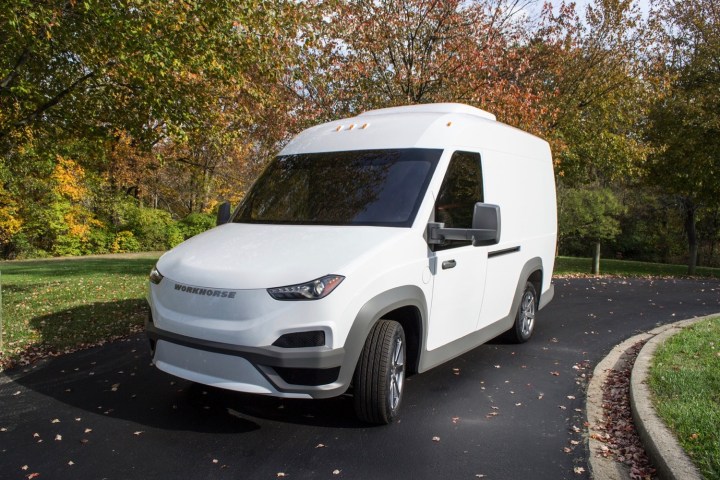 Not all electric vehicles have to be passenger cars. Workhorse has developed a line of electric delivery vans, and now it’s ready to put a fleet of them into service. Beginning in April, the company will deploy its N-Gen cargo vans in the San Francisco Bay Area in a pilot program testing their capabilities on real-world delivery routes.
Not all electric vehicles have to be passenger cars. Workhorse has developed a line of electric delivery vans, and now it’s ready to put a fleet of them into service. Beginning in April, the company will deploy its N-Gen cargo vans in the San Francisco Bay Area in a pilot program testing their capabilities on real-world delivery routes.
Workhorse will roll out the vans in partnership with Ryder, which will handle warranty and maintenance services. Ryder is probably best known as a truck-rental company, but it also performs maintenance as a contractor for other companies’ fleets. In addition to Workhorse, Ryder has partnered with Chinese-backed electric-van startup Chanje.
The all-wheel drive N-Gen vans Workhorse will deploy in San Francisco have a range of 100 miles in standard, all-electric configuration, according to the company. Workhorse also plans to offer an optional gasoline range extender that adds another 75 miles of claimed range, with an expected energy efficiency of 65 MPGe. The N-Gen’s bodywork is composite, to save weight, and Workhorse claims it has a lower floor height than other vans, making ingress and egress easier for the driver.
Customers purchasing N-Gen vans will be able to specify driver-assist systems like autonomous emergency braking and lane-centering assist, as well as Workhorse’s HorseFly drone, which can transport a small package over the last leg of a delivery.
In addition to the N-Gen, Workhorse markets larger electric vans, which have already found homes with some fleet customers. The company is now working with UPS to design a van specifically for the logistics giant. UPS will initially get 50 vans, which will be mixed into its fleets in Atlanta, Dallas, and Los Angeles. Workhorse and UPS will use data from that initial batch of vans to tweak the design, which will then be put into larger-scale production.
While automakers focus on building the next Tesla Model S, Workhorse aims for less obvious types of electric vehicles. Alongside its vans, the company is developing a plug-in hybrid pickup truck called the W-15, and it also created a personal helicopter called the SureFly that looks like a drone on steroids. The SureFly has been spun off into a separate company, though.
Editors' Recommendations
- Waymo robotaxi attacked and set on fire in San Francisco
- An autonomous car in San Francisco got stuck in wet concrete
- Watch San Franciscans take a ride in Waymo’s self-driving car
- Lucid Air electric car completes 400-mile loop between San Francisco and L.A.
- San Francisco’s curb on tech tests in public spaces could sink pogo stick plan


